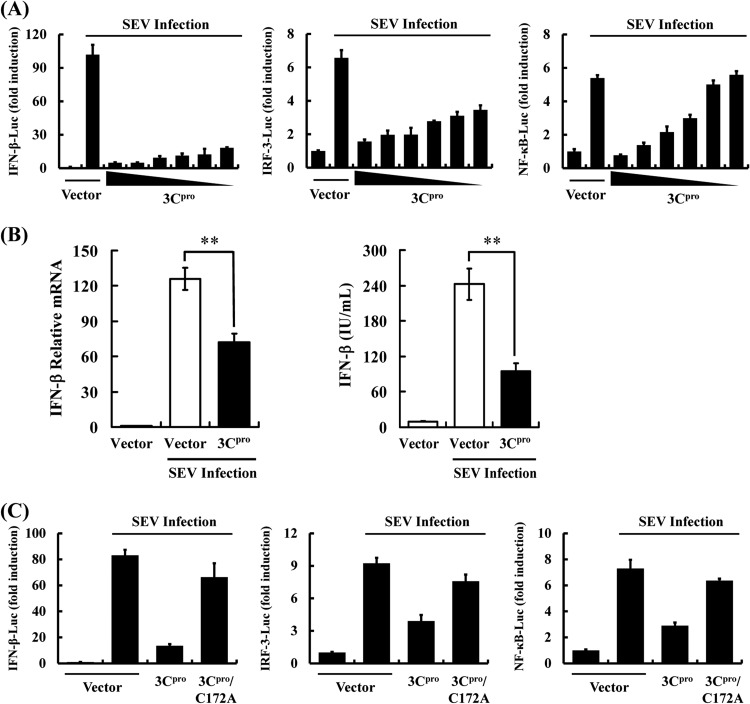FIG 1.
HAV 3Cpro inhibits IFN-β promoter activation, and this ability requires the protease activity of 3Cpro. (A) HEK293T cells cultured in 24-well plates were transfected with indicated reporter plasmid (0.1 μg), along with pRL-TK (0.02 μg, for normalization of transfection efficiency) plasmid and increasing quantities (0, 0.03125, 0.0625, 0.125, 0.25, 0.5, or 1 μg) of plasmid encoding HAV 3Cpro, using Lipofectamine 2000. Twenty-four hours after the initial transfection, the cells were further infected or mock infected with SEV. Luciferase assays were performed 16 h after infection. The results represent the mean and standard deviation from three independent experiments. The firefly luciferase activity was normalized to the Renilla reniformis luciferase, and the untreated empty vector control value was set to 1. IFN-β-Luc (left) expresses firefly luciferase under the control of the human IFN-β promoter. 4× IRF3-Luc (middle) and 4× NF-κB-Luc (right) contain four copies of the IRF3- or NF-κB-binding motif in front of a luciferase reporter gene, respectively. (B) HEK293T cells cultured in 24-well plates were transfected with 3Cpro expression plasmids or an empty vector (1 μg). Twenty-four hours after initial transfection, cells were further infected or mock infected with SEV. The cells and supernatants were collected at 16 h postinfection and analyzed for IFN-β levels by real-time RT-PCR (left) and ELISA (right). (C) HEK293T cells cultured in 24-well plates were cotransfected with the indicated reporter plasmid, along with pRL-TK plasmid and the designated 3Cpro expression plasmids (1 μg). An empty vector was used as a control. Twenty-four hours after initial transfection, cells were further infected or mock infected with SEV. Luciferase assays were performed 16 h after infection.

